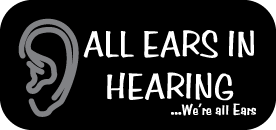Auditory Training
A Practical Guide to Sharpening Your Listening Skills
What Is Auditory Training?
Auditory training is all about helping your brain get better at making sense of sound. It’s a structured way to improve listening, attention, and understanding — whether you’re using hearing devices or just looking to strengthen your natural listening skills.
Think of it as a “workout” for your ears and brain. By regularly practicing specific listening tasks, your brain builds stronger connections that make it easier to focus on speech, recognize sounds, and follow conversations — even in noisy environments.
Different Approaches to Auditory Training
Phonemic Training
This method zooms in on the small details of sound — things like distinguishing between “p” and “b” or hearing subtle pitch changes in music. It helps train the ear to catch the finer points of speech and tone.
Synthetic Training
This approach focuses on the bigger picture — understanding meaning through context. It includes exercises like following conversations in background noise, predicting words, and improving communication strategies such as speechreading and clarification.
Computer-Based Training
Many modern programs use apps or online tools that adapt to your progress, add game-like challenges, and track results over time. They make it easy to practice at home while keeping training consistent and engaging.
Key Skills Auditory Training Improves
Sound Awareness and Discrimination
You’ll learn to tell apart sounds that are similar in pitch, loudness, or length — a foundation for clearer hearing and speech understanding.
Sound Identification
This step moves from recognising to labelling what you hear — such as identifying a word, voice, or melody. Over time, this improves how quickly you process and respond to sound.
Comprehension and Memory
Once your ears and brain are in sync, you’ll work on understanding meaning. This includes following instructions, remembering sequences, or interpreting conversations in different environments.
Who Can Benefit?
Children
Kids with auditory processing challenges benefit greatly from playful, engaging activities — like rhyming games, sound matching, or listening tasks with music. These support not just hearing, but also language and literacy.
Adults
Adults may focus on real-world skills — like hearing in meetings, understanding accents, or improving listening stamina. Many use auditory training to rebuild confidence after getting new hearing aids or implants.
Musicians and Audio Professionals
For musicians, auditory training can refine pitch, rhythm, and tone recognition — helping them perform, mix, and produce sound with greater precision.
How the Training Works
Consistency Is Key
Our in person sessions are 45-60 minutes once a week. Progress builds gradually, so the more consistent you are, the stronger the results.
Step-by-Step Difficulty
Programs usually start with simple listening tasks and gradually become more challenging — for example, moving from single words to full conversations or adding background noise.
Feedback and Motivation
Immediate feedback helps learners track what’s improving and where to focus next. Progress charts, levels, and even small rewards can keep motivation high.
Creating the Right Environment
Training works best in a quiet space with minimal distractions. Good-quality headphones or speakers make a big difference, especially for online or app-based programs. As you improve, adding gentle background noise helps you prepare for real-world situations.
Tracking Progress
You’ll notice progress in two ways:
- Objective measures: Improved accuracy, faster responses, and better test scores.
- Everyday experience: Feeling more confident following conversations, especially in noisy places, and noticing less listening fatigue.
Combining Auditory Training with Other Supports
Auditory training often works hand-in-hand with:
- Hearing aids or implants – to help your brain adapt faster
- Speech therapy – to strengthen language understanding
- Educational or workplace strategies – for clearer communication
- FM systems – to enhance speech over background noise and distance
What’s Next in Auditory Training?
Technology is making training smarter and more accessible. Programs using AI, virtual reality, and mobile apps can now personalize exercises to each person’s listening profile — making the experience more engaging and results more precise.
Auditory training is not just about hearing better — it’s about understanding better. Whether you’re a child learning to listen, an adult adapting to hearing devices, or a musician fine-tuning your ear, structured training can make listening more natural and enjoyable.
With the right program, consistency, and guidance, you can retrain your brain to hear — and truly listen — with greater clarity and confidence.
DISCLAIMER:
The information on this website is provided for educational purposes only. We do not support, nor recommend any products or treatments without proper hearing diagnostic and proper hearing evaluation. All users must seek professional advice before beginning treatment as well as inform themselves of known side effects/risks associated with said procedure(s).
Book an appointment
Please enter your details below and we will contact you to arrange your appointment. If you prefer to talk to us directly, please contact our hearing clinic number below.
Hearing Clinics
Rochedale South
- 5 Pannikin St, Rochedale South
- info@allearsinhearing.com.au
-
07 3841 3764
-
07 3841 3147
- 9am to 5pm. Monday to Friday.
Shailer Park
- 4/3 Mandew St, Shailer Park, 4128
- hearing@allearsinhearing.com.au
-
0478 282 561
- 9am to 5pm. Monday to Friday.
Note: Please call or text us if you like to visit our Shailer Park Hearing Clinic.
